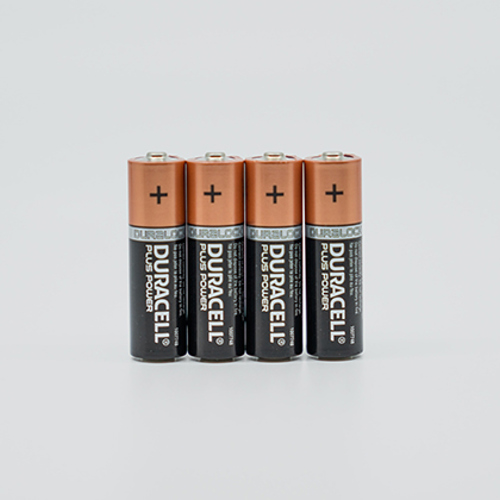Dr. Soly Mathew Biju MBCS CITP and Alex Mathew explore common problems with lithium-ion batteries and explore technologies that could revolutionise power in everything from cars to mobile phones.
We’ve made rapid strides in technology, with wearables tracking our every move, space exploration taking off, and health tracking devices becoming smaller and more effective with each passing day.
Each of these though has had one common Achilles’ heel, they don’t seem to have enough juice powering them on. Battery tech has simply not been able to keep pace with advancements all around.
The problem with Lithium-ion batteries
Plenty has been written about the many shortcomings of conventional lithium-ion batteries, right from their high flammability and poor life, to their bulk and snail-paced charging times.
Yes, fast-charging has helped, but you might want to 'note' the entire exploding battery fiasco from manufacturers trying to cram in too much into batteries and hoping to charge them way too fast. Newer Li-ion batteries offer faster and safer charging, but usually have low energy density. The root cause of most issues with conventional batteries is dendrite formation and volatility of the liquid component, usually made of lithium salts.
Dendrite formation is almost inevitable in conventional lithium-ion batteries and is the main cause of poor battery performance over time, and in worse cases, leads to explosions.
Moreover, electrolytes used in conventional lithium-ion batteries are highly flammable. Manufacturers have tried to circumvent this problem by settling for lower energy density batteries with fast charging speeds. Fast charging though, translates to faster dendrite formation.
Dendrites are whiskers of lithium that over time grow within batteries. It causes batteries to lose charge faster, and drastically reduces battery life. In certain cases, it can break through the membrane separating the electrodes, and short the battery. This is speculated to be the major cause of the random exploding of the infamous Samsung Note 7 phones.
Battery manufacturers are working towards alleviating this problem by introducing separators with an additional coating to help keep the electrodes apart. This, however, is more of a stopgap solution, as it doesn’t do much to improve battery efficiency. Putting it lightly then, lithium-ion batteries in the current form are a modern morphological nightmare for scientists and OEMs just the same.
Batteries for electric cars
Large batteries used in electric vehicles are usually more forgiving, as they have more room to play with. Apart from being green, electric vehicles, which can cost 30% more than their internal combustion engine counterparts, are touted to offer better value for money in the long run, usually around 5 years. However, these vehicles have drawn much slack, as battery performance tends to consistently get worse towards the end of this period.
Elon Musk might have wowed everyone, delivering the world’s largest battery in just a couple of weeks after signing the agreement with the Australian government, but the 100 MW that would power 30,000 homes takes up around 10,000 square meters of land. This, undoubtedly, is quite a feat and certainly a step in the right direction, but would ultimately be plagued by the same issues that cripple lithium-ion battery technology.
On the other end of the spectrum, mad rush of governments across the globe towards green sustainable energy has, among other things, seen a barrage of subsidies and tax exemptions being rolled out on purchase of electric vehicles.
Data provided by Future Market Insights, a market research solutions provider, suggests that the electric vehicle battery market will surge past US$ 13 billion by 2027. Given the spate of issues mentioned above though, battery tech in its current state is undercooked, at best. Put all this together, and the world is desperately in need of radical change in battery tech to power our dreams and save the world while we’re at it. Thankfully, the solution might not be far away.
Solution in Solid State Battery
The many gripes about the lithium-ion battery notwithstanding, it truly is a groundbreaking invention, which ushered in a wave of green technology. Befittingly then, John B. Goodenough, conferred with a Nobel Prize for this very work, has developed a new iteration of battery technology that could once again disrupt the course of mankind.
Solid state batteries have been around since the early 1830s, but it’s only now that this technology may go mainstream. Goodenough and his team have published a paper that talks about a glass powder-based electrolyte that could replace the liquid used in conventional lithium-ion batteries and increase energy density by as much as 2X. Solid glass electrolytes are also a good enough solution to curb dendrite formation in batteries.
These next-gen batteries would completely do away with the liquid component, eradicating the runaway effect that leads to fires in their liquid electrolyte counterparts. Solid state batteries produce significantly less heat, doing away with cooling components that are used in conventional batteries, potentially allowing for more room to increase battery size or decrease overall footprint. The prototype developed by the team is much lighter and offers exponentially longer battery life - 1,200 charge cycles with low degradation, comparable to 500 charge cycles on a conventional lithium-ion battery.
For you
Be part of something bigger, join BCS, The Chartered Institute for IT.
Using widely available sodium, instead of rarer lithium makes it cheaper and easier to produce, while being more eco-friendly. Add to that the fact that it would be operable at extreme temperatures of -20°C to 60°C, opening up new completely unexplored application areas.
Global heavyweights like Tesla, Daimler, Toyota, BMW, and Nissan have already thrown their weight behind this new technology, with each working on their own version.
Tesla is believed to be working closely with Jeff Dahn and his team at Dalhousie University, Halifax - widely regarded to be among the brightest minds in lithium-ion technology research - to develop next-gen solid state batteries. Daimler, on the other hand, has partnered with IBM to deploy quantum computing to develop lithium-sulphur batteries. Others have been treading carefully into this largely unexplored territory, but agree in unison that the technology would take off by 2025.
Global implications
It would be no exaggeration to say that solid state batteries would bring about a disruption of epic proportions across not just the technology sector, but also every other sector imaginable. Automotive sector would be among the early adopters of this technology, which would surely sound the death knell for the trusty old internal combustion engine.
To put things into perspective, armed with a solid state battery roughly the same size as the existing battery used, the new Tesla Model 3 would be able to cover an incredible 700 miles (1,026 km) on a single charge, and boast of a life of over 1-million miles.
The renewable energy sector, which has forever grappled with energy storage issues would be able to efficiently and safely store energy in such solid state batteries, which would occupy around half the space of current lithium-ion batteries, while storing as much or more energy. Another important aspect of these new age batteries is the shift away from expensive cobalt components used in conventional batteries.
While its implementation in consumer electronics, especially smartphones is a few years away, when introduced, it’ll provide for superior charging times, with phones lasting for more than a week on a single charge. It’ll also pave the way for robust wearables that’ll have more room for other components, with the battery occupying a smaller space.
The biggest disruption would by far be in the healthcare sector, with medical devices growing smaller, lighter, and effectively less intrusive. We’d see vitro surface patches finally hit mainstream, to monitor vital signs. Neuro simulators powered by tiny solid state batteries would be widely used in treating Parkinson’s disease. Drug delivery patches would be more effective and lighter.
Efficient solid state batteries would help in development of lighter and more functional prosthetic limbs. Exoskeletons too would take a giant leap and finally be ready for deployment in real-life scenarios. Extreme operational temperatures and long battery life would usher in an era of space exploration, deeper and more insightful into the universe than ever deemed possible.
Military drones and surveillance systems would be able to operate for extended periods, with greater operational range. Electric airplanes, that have till now been part of science fiction, might soon be a reality too. The possibilities simply are endless.
Future battery technologies
It goes unsaid that success in the lab doesn’t necessarily translate to commercial success. Manufacturing solid state batteries to scale is one of the biggest roadblocks today. You might also want to bear in mind that critics have questioned claims made by Goodenough and his team.
Controversy mainly surrounds the claim that the prototype is able to store more energy over time, clearly opposing laws of thermodynamics that state that energy capacity would decrease over charge-discharge cycles. Maria Braga, an integral part of Goodenough’s team, points out that ‘This is what happens as you are charging and discharging. You are aligning the ferroelectric dipoles.’
She states that during charge cycles, glass, being a ferroelectric electrolyte, moves back and forth and finds the optimal configuration of each electromagnetic dipole over the course of time. Also, manufacturers would need to find a solution to ensure the safety of the highly fragile glass component in these batteries.
Even the greatest of detractors and harshest of critics would agree that the age of solid state batteries is upon us. It’s only a matter of time before this technology goes mainstream and brings about a complete paradigm shift across industries after the initial gestation period through 2025. We’re only just entering the new decade, and it already seems to be one that would be remembered as the decade when battery tech finally came of age!

















